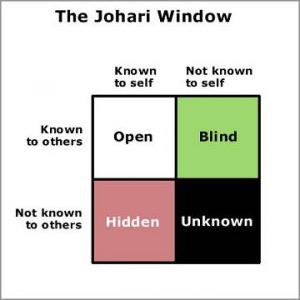Recently I hosted a little gathering at our local library and talked about my books and fiction writing. One of the questions I was asked during the workshop was how do I make my characters seem so real? What are the secrets to creating characters that seem to walk off the page? 
All of us have read books either where we loved the characters so much, we hated for the book to end or where the characters seemed card-boardish. In the former case, we didn’t think about some author somewhere creating characters, instead we thought of those characters as people we know. Often my readers talk about my characters and what they would do in a certain situation and it throws me. My first thought is, who are they talking about? Then I remember they’re reading one of my books. It’s a strange feeling for an author, but not for a reader.
When I allow my imagination to run free, good characters emerge. But, when I struggle to restrict a character in some sort of box, that’s when I have trouble. So let’s try and answer the question how to develop characters that walk off the page:
- Let go of the story. For pantser writers that’s not too hard. But, if you’re an outliner, it’s harder. If you hold on too tight to what you think a character should do or where the story should go, you’ll lose the ability to create real characters. My characters keep me straight. Yes, I’m more a pantser writer than an outliner, but I do usually know where the story is going. If I head in that direction and one of the characters tugs me elsewhere, I usually go (if sometimes reluctantly). There have been a couple of times in my creative writing experience that I’ve ignored the character. Eventually that catches up with me and the character wins. Whenever I let the character tell me what to do and where to direct the story, it no longer becomes mine to manipulate. It becomes something out of my imagination that I never knew existed.
- Set up case scenarios for your characters. Instead of creating a background that specifically states what the character eats, does during the day, looks like, etc., put the character in fictitious situations and see what they do. Actions are the important part of a story. It’s what moves the story forward. These are situations that may or may not ever come up in the story. But, they will give you clues about the character and will put you in the head of that character. You are no longer directing. You are simply recording on paper (or computer) what the character does.
- Develop a clear backstory for your character. Again, you can’t do this without the character’s help. You must do 1 and 2 above before you can do number 3. The backstory will give you clues to that character’s motivations. A character who has lived a charmed life with no tragedy probably will not put herself at risk to solve a mystery. A character who came from a broken family might respond differently than one who came from an intact family. What about siblings? Is your character the oldest in the sibship? That character might take more risks than the middle child.
Year’s ago two psychologists developed a diagram called the Johari Window to help people  understand their actions and their behavior in relation to each other. This model suggests that when we encounter others, we react in certain ways depending on what we know about that person and what they know about us. For example in the Open area, I know about you and you know about me, everything is out in the open. In the Blind Area, you know about me, but I don’t know that about myself–blind spots, so to speak.. In the Hidden Area, I know things about me that you don’t know. And, in the Unknown Area, there are things both you and I do not know about each other.
understand their actions and their behavior in relation to each other. This model suggests that when we encounter others, we react in certain ways depending on what we know about that person and what they know about us. For example in the Open area, I know about you and you know about me, everything is out in the open. In the Blind Area, you know about me, but I don’t know that about myself–blind spots, so to speak.. In the Hidden Area, I know things about me that you don’t know. And, in the Unknown Area, there are things both you and I do not know about each other.
How does the Johari Window affect characterization?
- If I think I know everything about my characters, I am probably operating in the Blind Area. I cannot see what my characters can see.
- If I hide things from my characters, thinking I know more than they do, I’m operating in the Hidden Area and my story will appear manipulated and predictable.
- If I operate in the Unknown area where I understand that neither I nor my characters know it all, then eureka moments will evolve. This is where true creativity exists. The two psychologists, who developed this model, wrote that when we allow ourselves to go into the unknown with an open mind, willing to accept what is there, we will discover that creative spark. Once known, that information becomes part of our Open Area.
- The goal is to end up with as much in the Open Area as possible. By doing that you trust your characters to teach you about who they are, and they trust you to tell their story.
Using the Johari Window, I’ve learned to recognize when I’m operating in the Blind Area.When that happens, I let go of the story, allow my mind to travel to new places, and trust that the end will prove the trip worthwhile.
This post is part of the #AuthorToolBoxBlogHop. You can learn many more writing tips. Visit the other blogs on the hop here.







The Johari Window, I’d never heard of that before, and I love it! Intuitively, I think I realized this, but it’s so much more helpful to have a diagram explaining it. Thanks so much, Joan! I’ll add this into my Facebook schedule as well. 🙂
Thanks Raimey. My website had issues yesterday. But, it looks as though it’s working today! The horrors of technology.
I’m glad people are finding the Johari Window interesting. I’ve used the theory throughout my career in many facets of communication.
I’ve vaguely heard of the Johari Window before, but I’ve never seen it applied to characterisation. What an intriguing idea. Thanks for sharing!
Yes Iola, I’ve used the theory of the Johari Window in many facets of my career. It’s helpful when thinking about all kinds of communication. Thinking about it in relation to characterization was a fun exercise for me. I’m sure that’s not how Joe and Hari intended it!
I’ve read about the Johari window before and like so many things I’ve read it’s lost somewhere in the back of my mind. The good news is its there somewhere. I know I’m using it or I’d still suck at getting a story down. hehehe
Anna from elements of emaginette
Hey Anna, Yes, the Johari Window has been around for quite some time. I think since the late 60’s. But, looking at it in relation to how we construct our characters was an interesting test for me. Indeed characterization is a relationship between the author, reader and their characters. So, that makes the Johari Window quite apropos.
I had never heard of the Johari Window. Thanks for teaching me something new. I do things in a different order than you (1 and 3 before number 2) probably because I am a planner. However, at the end of the day we both let the character dictate how things happen, and I think that is the key to realistic characters.
Dear EMA, Absolutely, the order isn’t that important. You nailed it. What’s important is creating realistic characters whose behaviors and decisions come from them versus the author. (I know that sounds strange, but being an author, you get it!).
I, also, have never heard of the Johari Window. Thank you so much for a clear explanation. This is truly an interesting post. Many times, my characters show me where we’re going and why. But I am a planner. I don’t like to get lost. Realistic characters are at the heart of the story.
Dear Victoria, I’m sure it’s hard to feel lost in your story. I am a pantster writer so I get lost all the time. Nonetheless, it’s quite scary, even for me, and sometimes I wonder if everything will work out. I’ve learned to trust the process.
Very interesting post. Your observations about the “blind area” are particularly insightful. I think part of the challenge is how often we are used to the idea of “knowing” before we “do”. I often find my best “aha” moments often come when I’m “busy” with something else. I think in the absence of a purpose or goal, it can prove challenging to strike that mental balance between “relaxed” and “ready”.
Thank you for sharing.
Good points, Adam. Indeed, I agree that the best “aha” moments do often happen when I’m not consciously thinking about it. This is true with all kinds of “puzzles,” whether it’s a thorny place in your writing or a particularly hard crossword. Thanks for stopping by.
I love the idea of the Johari Window. I’m also relieved to hear you say you don’t know everything about your character. There’s so much about the romantic interest in my trilogy that I don’t know, that I was beginning to worry if it was an issue, and if my knowledge of him as a reserved person was just an excuse! I feel a little bit better about not knowing everything about him now. 😉
Hi Latricia, I’m glad you feel batter about not knowing everything. The trick is to let go enough to allow the character to lead you along. It’s almost like writing in a trance. Not quite, but… sometimes, I do forget to eat!
Great advice for creating characters! Thanks for sharing. 🙂
Hi Charity. Thanks for stopping by. I’m glad you found the post helpful.